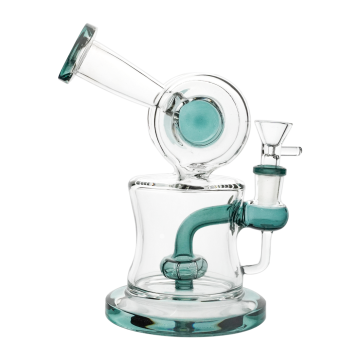Art you can smoke: the strange and exquisite bongs worth ,000 from freeamfva's blog
Art you can smoke: the strange and exquisite bongs worth $50,000
below Kyle Tracey’s flatscreen TV there’s a velociraptor skeleton, perhaps 3ft long, in a hunting crouch. The mouthpiece is beneath a removable section of the tail. Tracey estimates the elaborate bong would sell for $20,000 to $30,000.To get more news about rick and morty bong glow in the dark, you can visit sharebongs.com official website.
Hanging on a nearby wall is a roughly full-sized glass lion skull encircled by a spiky mane – a tribute to Cecil, the slaughtered lion. The pipe, made by the same high-end bongmaker as the dinosaur, doubles as a lamp; the skull detaches for smoking. Its estimated value is $50,000.
Tracey, a marijuana entrepreneur, has collected glass pipes since he was a teenager. But calling his most cherished and valuable pieces “pipes” is a bit like calling Fabergé Eggs “paperweights”.
Exquisite and expensive glass pieces like these make up only a tiny fraction of a multibillion-dollar industry for marijuana accessories, but the market is bound to grow as consumers grow less shy about keeping attractive pipes on display.
Like many aspects of cannabis culture, glassmaking for many years belonged to young men who weren’t inclined to talk about it. Many faced legal risks. Drug paraphernalia laws remain on the books in many states and federally, though they now tend to be less strictly enforced. Within the crucible of an illegal market, glassmakers forged a new American folk art, a kind of sculptural jazz.

From a nearby table Tracey grabbed a clear bong, about a foot high, by Quave CB in Seattle. It wouldn’t stand out on a head shop shelf, but when he pulled on the mouthpiece, the water circulated as if the plumbing had been designed by MC Escher ($30,000). Known as a Klein Recycler, the style pays tribute to Felix Klein, a pioneer of non-Euclidean geometry who theorized the existence of a bottle which contains itself.
Young misfits wielding blowtorches do not fit the image the industry hopes to project, no matter how ingenious or exuberant their work. The glassmakers, moreover, are easy to group with the hippies and smelly headshops which ambitious brands targeting young professionals deride.
This schism got an online airing last year when Alan Gertner, the CEO of a hipster cannabis brand called Tokyo Smoke, belittled the glass subculture. “There’s basically only ever been one pipe,” he said. “It’s like you can smoke out of this small glass dragon or our larger format glass dragon.”
The dig came during a promotional video for a $13,000 bong 3D printed out of stainless steel, and glass aficionados reminded him that you don’t make a $13,000 bong out of steel, because the smoke will pick up an undesirable metallic taste.
For the new generation of consumers, there’s a new class of attractive pipe, which follows the clean lines and familiar precepts of well-thought-out design but lacks the unruly trippiness or visceral appeal of more “traditional” glass bongs.
One of the most influential American designers of the last 50 years is a glassworker named Bob Snodgrass, who followed the Grateful Dead for much of the 1970s and 1980s, and is credited with adapting lampmaking techniques to make smoking devices. Work by his followers can be found in every stripmall smoke shop and in the hands of any stoner who has ever proudly showed off a new piece.
Myriad styles have emerged. Hot glass can be flattened, twisted, bent, punctured, sealed, tweezed, sculpted, turned and so much else. The finished products can be juvenile, timeless or both.
Like tattooing, an underground artform that has gone mainstream, glasswork has created an opportunity for those with talent and hustle, but not school or connections, to live on their own terms.

The Wall